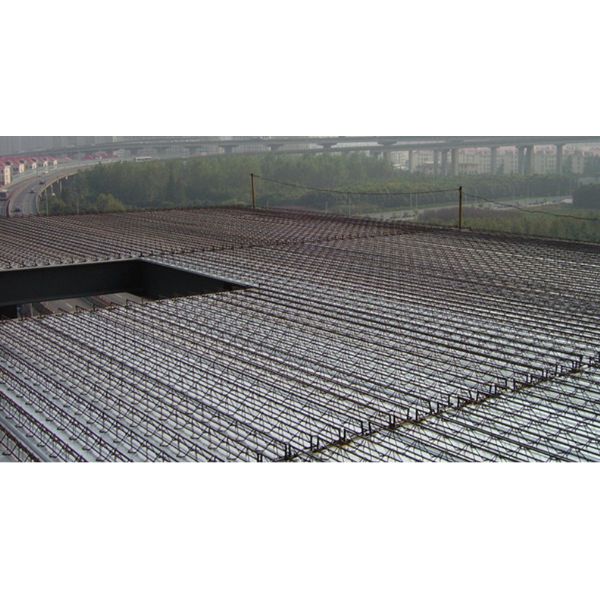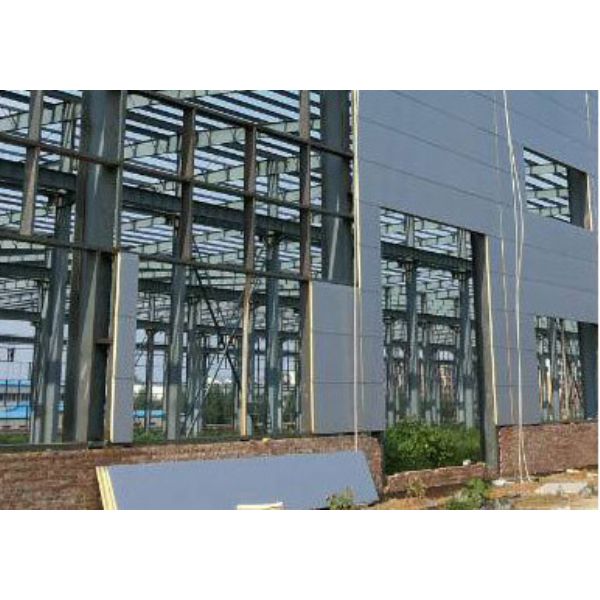From towering skyscrapers that define city skylines to modest residential extensions and workshops, the steel beam stands as one of the most essential components in modern construction. Renowned for its unmatched strength, durability, and adaptability, this structural element has transformed how architects and engineers create safe, functional, and visually striking buildings. Whether supporting the immense weight of high-rise towers or providing practical solutions for smaller projects, it serves as the backbone of stability and long-term performance. This article explores the evolution of steel beam solutions across various applications—examining their types, benefits, challenges, and the innovations shaping the future of the construction industry.
The Fundamentals of Steel Beams
What is a Steel Beam?
A steel beam is a horizontal load-bearing element designed to resist bending and shear forces while transferring structural loads from floors, roofs, and walls down to columns or foundations. Essentially, it acts as the backbone of any structural framework, distributing weight evenly to maintain balance and integrity. In both large-scale and small-scale projects, the steel ensures that buildings can withstand heavy loads, vibrations, and environmental stresses without deformation or collapse.
The structural purpose of a the steel extends beyond simple support—it also shapes how architects design open spaces, roof spans, and cantilevered elements. Its combination of tensile strength, compressive resistance, and flexibility makes it far superior to traditional materials such as timber or reinforced concrete when dealing with long spans or high loads. Whether in industrial workshops, residential renovations, or multi-story towers, steel beams enable engineers to design safer and more efficient spaces with minimal structural compromise.
Key characteristics of a high-quality steel beam include its ability to resist bending moments, maintain structural stability under fluctuating loads, and perform consistently under high-stress conditions such as wind, seismic activity, or temperature variation. Moreover, its precision-manufactured geometry allows for exact alignment, reducing human error during installation and improving overall construction speed and accuracy.
Types of Steel Beams
The versatility of steel allows for various beam shapes and profiles, each engineered for specific structural needs. Selecting the right type of steel beam is crucial to achieving the desired balance between strength, cost, and efficiency.
- H-Beam: Also known as a universal beam, this type features wide, parallel flanges and a thicker web. Its robust cross-section provides superior load distribution, making it ideal for bridges, heavy industrial buildings, and large-span structures.
- I-Beam: The traditional “I” shape is lighter than the H-beam, with tapered flanges designed for efficiency. Commonly used in residential and commercial floors, the I-beam delivers excellent performance at a lower material cost.
- T-Beam and L-Beam: Used primarily for composite or secondary support systems, these beams help transfer loads between primary framing elements, such as floors, ceilings, or walls.
- Wide Flange Beams (WF): A modern evolution of the H-beam, the wide flange beam offers improved stability under both vertical and lateral loads, making it popular in seismic and wind-prone regions.
- Custom Fabricated Beams: When architectural aesthetics or unique load conditions demand, beams are custom-fabricated through welding or lamination, allowing complex geometries like tapered or curved profiles to match project-specific requirements.
Materials & Composition
Most steel beams are manufactured using carbon or alloy steels that offer a balance of strength, ductility, and weldability. Common structural grades include ASTM A36 for general construction, ASTM A992 for high-strength low-alloy applications, and S355JR under the European EN standard. Each grade provides a specific yield strength, tensile strength, and chemical composition that determine its performance in different environments.
To extend service life and prevent corrosion, protective coatings are often applied. Galvanization (zinc coating) offers long-term protection against rust, while epoxy paints and powder coatings provide durable finishes suitable for interior and exterior environments. In harsh marine or industrial settings, advanced coatings or stainless-steel alloys may be used for maximum resistance.
Manufacturing processes such as hot-rolling, cold-forming, and welding play an essential role in determining the beam’s final properties. Hot-rolled beams are preferred for heavy-duty structural applications due to their density and strength, while cold-formed beams provide lighter, more precise options for modular and prefabricated buildings.
Lastly, sustainability is an increasingly important factor in material selection. Today’s steel beams often contain up to 90% recycled content and are themselves fully recyclable, aligning with modern green building standards. This combination of performance, precision, and sustainability makes the steel an enduring choice in every tier of construction—from monumental towers to everyday residential structures.
Steel Beams in Skyscraper Construction

Why Steel Beams are Essential for High-Rises
In skyscraper construction, the steel beam is the primary structural component that makes vertical ambition possible. As buildings reach hundreds of meters in height, they must endure immense gravitational and lateral forces from wind, seismic activity, and dynamic occupancy loads. The steel provides the tensile and compressive strength necessary to counter these stresses while maintaining a relatively light overall frame weight. This balance of strength and flexibility is what allows tall buildings to sway safely rather than fracture under pressure.
Unlike concrete, which performs well in compression but poorly in tension, the steel excels in both. This dual strength allows engineers to design frameworks that are both lighter and more efficient, significantly reducing the size of foundations and enabling more usable interior space. In addition, steel’s ductility makes it ideal for high-rise designs that must absorb energy from earthquakes or wind without permanent deformation.
Another advantage is construction efficiency. Steel beams are prefabricated offsite and bolted or welded into place with precision, drastically reducing construction time compared to traditional cast-in-place methods. This modularity allows skyscrapers to rise floor by floor in a predictable, accelerated schedule while maintaining quality and safety standards.
Famous Skyscrapers Built with Steel Beams
Throughout history, the steel beam has defined architectural milestones and pushed the limits of what cities can build. Some of the world’s most recognizable towers owe their existence to innovative steel frameworks.
- Empire State Building (New York): Completed in 1931, this iconic skyscraper was constructed with a lattice of steel beams and columns assembled at a record-breaking pace—four and a half floors per week. Its skeleton remains a symbol of engineering mastery and remains structurally sound nearly a century later.
- Willis Tower (Chicago): Formerly the Sears Tower, it utilized bundled-tube framing composed of interconnected steel beams, giving it immense lateral strength against high winds off Lake Michigan.
- Burj Khalifa (Dubai): Although primarily a composite structure, the Burj incorporates high-performance steel beams in its spire and mechanical floors, ensuring stability at its unprecedented height of 828 m.
- Shanghai Tower (China): The world’s second-tallest building integrates mega-columns and steel beams with reinforced concrete cores, enabling a twisted aerodynamic form that reduces wind load by 24%.
These examples illustrate how the evolution of steel beam technology has continually expanded the boundaries of architectural design—from rigid frames to tube and core systems that optimize material use and improve resistance to natural forces.
Advanced Steel Beam Engineering for Skyscrapers
Modern high-rise engineering combines the strength of steel beams with cutting-edge computational modeling and smart construction techniques. Engineers now use finite element analysis (FEA) to simulate how each beam behaves under complex loads, ensuring that every connection and weld performs flawlessly under stress. Beams are designed not only for static loads but also for dynamic factors such as wind-induced vibrations and seismic shifts.
Composite construction—where steel beams work in conjunction with reinforced concrete slabs—has become the dominant approach in today’s skyscrapers. The synergy between the two materials allows for thinner slabs, reduced beam depths, and greater energy efficiency. This hybrid design provides the stiffness of concrete with the elasticity of steel, delivering an optimal balance of performance and cost.
Fireproofing is another vital aspect of skyscraper beam design. Because steel loses strength when exposed to high temperatures, protective systems such as intumescent coatings, spray-applied fire-resistant materials (SFRM), and encasement panels are applied to beams to meet fire safety codes. These technologies provide critical minutes of protection during emergencies, allowing safe evacuation and structural integrity retention.
Innovation has also shifted toward sustainability. Many skyscraper projects now use recycled steel or employ manufacturing techniques powered by renewable energy to reduce carbon footprints. Lightweight high-performance alloys, including microalloyed steels, further decrease the total weight of structures without sacrificing strength. Combined with modern prefabrication, this leads to lower transportation costs, faster assembly, and reduced environmental impact.
In addition, advanced monitoring systems are transforming how steel beams are maintained over time. Embedded IoT sensors track temperature, strain, and vibration data, feeding real-time analytics that predict fatigue or corrosion before they become critical. This proactive approach extends the lifespan of skyscraper structures while minimizing maintenance costs.
Integration with Modern Architectural Design
Today’s architects view steel beams not only as structural necessities but as aesthetic components. Exposed steel frameworks—seen in designs like the Lloyd’s Building in London or the Hearst Tower in New York—celebrate the beauty of engineering itself. The precision and minimalism of steel construction allow for transparency, lightness, and architectural creativity previously impossible with bulkier materials.
As global urban skylines continue to evolve, the role of the steel will only become more significant. It supports not just the physical weight of our cities, but also the aspirations of sustainable, resilient, and intelligent design. From century-old icons to futuristic towers, steel remains the material that enables humanity to build higher, faster, and smarter than ever before.
Steel Beam Applications in Medium-Scale Projects
Commercial & Industrial Buildings
Medium-scale structures like factories, warehouses, and shopping malls heavily rely on steel beams for open-span design. These beams eliminate the need for internal columns, creating wide, unobstructed interior spaces that improve functionality and aesthetic appeal. The modularity of steel beam systems also accelerates construction timelines and facilitates future expansion.
Infrastructure Projects
Infrastructure relies on steel beams to deliver strength, stability, and adaptability. They are fundamental components in bridges, overpasses, tunnels, and railway stations. For example, modern bridge design often utilizes large welded girders and composite decks supported by high-strength steel beams, allowing for efficient load transfer and reduced maintenance over decades of service.
Public Facilities
Public structures such as schools, hospitals, and sports stadiums benefit from the versatility of steel beams. They allow architects to create large column-free halls and dynamic roof systems while maintaining strict safety and sustainability standards. These benefits make steel an ideal choice for long-lasting civic infrastructure.
Steel Beam Use in Small-Scale Projects
Residential Buildings
In residential construction, steel beams are increasingly favored over wood for their longevity, termite resistance, and superior load capacity. They are often used in framing systems, floor joists, and roof supports. Homeowners seeking durable, low-maintenance alternatives turn to steel framing to improve structural performance and energy efficiency.
Renovation & Remodeling
For home renovations, the steel beam is an ideal choice when creating open floor plans or extending living spaces. Its strength enables the removal of load-bearing walls without compromising structural safety. In loft conversions or basement extensions, steel beams provide the additional support needed for vertical or lateral expansion.
DIY and Small Workshops
Pre-fabricated steel beams and lightweight framing kits have made small-scale construction more accessible to contractors and hobbyists alike. These ready-to-assemble systems minimize onsite fabrication, reducing labor costs and allowing rapid project completion. For garages, workshops, or garden structures, steel offers a cost-effective, long-lasting solution.
Advantages of Steel Beams
Structural Benefits
- High Strength-to-Weight Ratio: Steel beams can support immense loads relative to their weight, optimizing material efficiency.
- Durability: Resistant to decay, pests, and weathering, ensuring extended service life.
Design Flexibility
- Enables wide-open interior spaces and architectural creativity.
- Custom-fabricated steel beams can achieve curved, tapered, or decorative forms to meet specific design goals.
Cost Efficiency
Although the initial cost of a steel beam may exceed that of concrete or timber, its durability and reduced maintenance needs make it more economical in the long run. Prefabrication reduces onsite labor time and allows faster project completion, translating to significant savings for developers and owners.
Sustainability & Recycling
Steel is one of the world’s most recyclable materials. Over 90% of structural steel is reused or recycled, contributing to global sustainability initiatives. Steel beams align with green building certifications like LEED and BREEAM, promoting responsible sourcing and circular economy principles in the construction industry.
Choosing the Right Steel Beam for Your Project
Factors to Consider
| Criteria | Description |
|---|---|
| Load-Bearing Requirements | Determine beam size and grade based on expected loads and usage type. |
| Span Length & Building Height | Longer spans require larger or reinforced steel beams to minimize deflection. |
| Environmental Conditions | Consider humidity, temperature, and corrosion risks when selecting coatings and finishes. |
Consulting with Structural Engineers
Collaborating with certified structural engineers ensures precise beam sizing and safe installation. They perform load simulations, material testing, and code compliance checks to guarantee the project meets all regulatory requirements.
Suppliers and Quality Standards
Reputable suppliers provide certified steel beams that meet international standards such as ASTM, EN, or ISO. Local sourcing can reduce logistics costs, while global manufacturers may offer advanced alloys and innovative fabrication options. Always verify certifications and mill test reports before procurement.
Future of Steel Beam Solutions

Innovations in Steel Manufacturing
The future of steel beam solutions lies in advanced metallurgy and digital fabrication. As global demand for efficient, lightweight structures grows, researchers are developing new alloys that maximize strength while minimizing material use. High-performance steels, such as microalloyed and thermomechanically treated variants, provide superior load resistance with reduced cross-sectional weight. These materials not only improve performance but also cut down on transportation costs and energy consumption during production.
Modern manufacturing technologies—like laser cutting, robotic welding, and 3D modeling—are transforming how steel beams are produced. Computer-controlled precision ensures each beam is fabricated to exact tolerances, reducing waste and enhancing structural consistency. Robotic assembly lines can now weld complex geometries with minimal error, enabling more intricate architectural forms and efficient load paths. Through Building Information Modeling (BIM), engineers can digitally simulate beam placement, alignment, and joint performance long before construction begins, streamlining project timelines and reducing costly rework.
Another exciting development is the rise of additive manufacturing (3D printing) in the steel sector. Although still in its early stages, large-scale metal printing can produce custom-shaped steel beams with optimized internal geometries that balance strength and weight. Such beams could dramatically reduce material waste while providing architects with previously impossible design freedom. Combined with automated quality inspection using machine vision, these technologies mark a new era of precision and sustainability in steel fabrication.
Smart Building Integration
The integration of steel beams with smart building systems is redefining how structures are monitored and maintained. Through embedded sensors, IoT (Internet of Things) devices, and AI analytics, engineers can now collect real-time data on stress, deflection, vibration, and temperature changes within the beam. This continuous monitoring enables predictive maintenance—detecting potential fatigue or corrosion before it becomes critical—thus extending the service life of structures and reducing long-term costs.
Smart steel beam systems also contribute to the rise of modular and prefabricated construction. In this approach, beams and connections are manufactured in controlled factory environments, fitted with pre-installed sensors, and transported to the job site for quick assembly. This modularity minimizes weather-related delays, reduces material waste, and enhances safety for on-site workers. Moreover, digital twin technology allows engineers to create virtual replicas of the entire building, linking each steel beam to a live data feed. This integration supports instant diagnostics, adaptive load redistribution, and even automated maintenance scheduling.
As automation continues to advance, AI-driven optimization will also influence the design of steel beam systems. Algorithms will predict how load paths evolve over time, adjusting cross-sections or reinforcement patterns to optimize performance dynamically. Such adaptive structures will play a critical role in the next generation of resilient and intelligent buildings.
The Sustainability Perspective
Sustainability is now a cornerstone of modern construction, and the steel beam stands at its forefront. Unlike most building materials, steel can be endlessly recycled without losing its properties. On average, new structural steel contains over 80–90% recycled content, making it one of the most environmentally responsible materials available. By reusing scrap steel, manufacturers significantly reduce the need for mining raw iron ore and the associated environmental degradation.
Green manufacturing processes are rapidly evolving to further reduce carbon emissions. Hydrogen-based smelting and electric arc furnaces powered by renewable energy sources are expected to replace traditional coal-based methods in the coming decades. These technologies will enable near-zero-emission steel production, aligning with global net-zero carbon goals.
In addition, sustainability extends beyond production to lifecycle design. Future steel beams will be part of circular construction models, where components are designed for easy disassembly and reuse in new projects. Advanced coatings and corrosion-resistant alloys will further extend service life, reducing replacement frequency and waste generation.
Ultimately, the fusion of technology, intelligence, and environmental responsibility will define the future of steel beam solutions. As the construction industry embraces innovation, these advancements will allow engineers to design buildings that are not only stronger and smarter but also cleaner and more sustainable—paving the way toward a truly circular and resilient built environment.
Conclusion
From iconic skyscrapers to small backyard workshops, the steel beam remains the backbone of modern construction. Its combination of durability, design flexibility, and sustainability ensures it continues to lead innovation in structural engineering. As new technologies and environmental standards evolve, steel beam solutions will keep shaping the skylines and spaces of the future—strong, efficient, and built to last.






